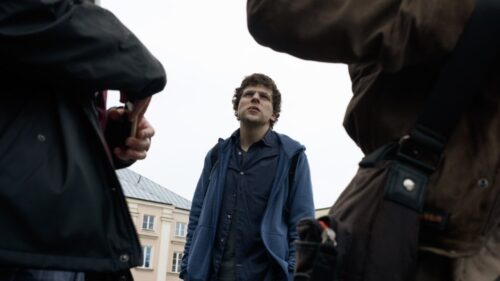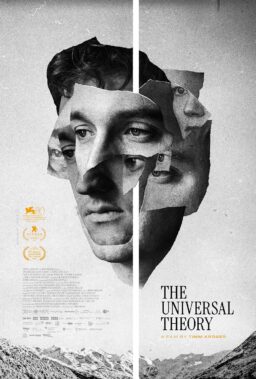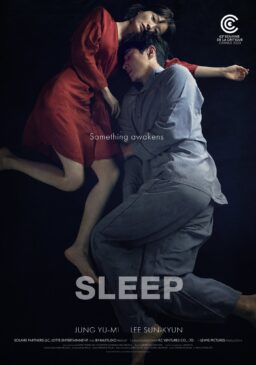The inspiring, heartfelt, and profound documentary "Daughters" swept this year's Sundance Film Festival, winning both the Audience Award for U.S. Documentary and the overall Festival Favorite Award. Co-directed by Angela Patton and Natalie Rae, this beautiful film follows four girls and their incarcerated fathers as they prepare to attend a father-daughter dance held in Washington, D.C. Rae was inspired to reach out to Patton, CEO of Girls For A Change, after watching her TED Talk about their program Date With Dad Weekend. Together, they have created a film that is as touching and personal as it is informative and vital, shining a light on how programs like this can help heal family wounds caused by this separation. The film also shows the visceral impact of harmful policies, like the restriction and, in some cases, outright elimination of touch visits, on the well-being of both the girls and their fathers.
Based in Richmond, Virginia, Patton is a fierce activist and advocate for what she calls "at-promise" Black girls in her community, dedicating her life to making sure they feel not only seen and heard but also celebrated as they come of age. In fact, the Date With Dad Weekend came about directly due to requests from girls participating in other programs run by Girls For A Change. Originally from Vancouver but based in Los Angeles, co-director Rae got her start directing music videos. Her video for Serena Ryder's ‘Stompa' won Rock Video of the Year at the iHeartRadio Much Music Video Awards in 2013, and she has collaborated on visual works for a multitude of musical artists, including Leon Bridges and H.E.R. She has also directed brand spots for Adidas, Booking.com, and lululemon.
The first feature film from Patton and Rae, "Daughters," is the culmination of eight years of collaboration and a shared cinematic vision for bringing these girls' stories—and wisdom—to the world.
For this month's Female Filmmakers in Focus column, RogerEbert.com spoke to Patton and Rae over Zoom about how their collaboration first began, the journeys they went on with these girls, working with them on how they will be presented in the film, and finding the right emotional ending for the documentary.
Angela, I read that you'd been approached several times to bring this story to the screen, and when you met Natalie, you knew you had the right partner. What was that meeting like, and how did you realize she was the right person to help bring this story to the screen?
Angela Patton: It was her email because her email was the only one I received and/or a conversation I had that wanted to center the girls, and that was important to me. I still did not decide or go, "Oh yes, I want to make a film about this." I really was just like, "Let me just hear what people have to say." Other film directors who reached out to me really wanted to tell a jail story and focus on the fathers. But because this actual initiative came from the hearts, the minds, and the souls of Black girls in our community, I needed to stay the course of that. I would do nothing to disrespect what the girls created or discontinue them being a part of this. That is not my story to tell alone. And then, if we were going to tell the story, we needed someone to be in sync with the journey of the girls creating this. And she understood it. Really listened to the TED Talk. She came to Richmond, Virginia, and met with me, came to my center, met with the sheriff who allowed us to do our first dance, and met with past participants in the Date With Dad program. So I was attracted to her tenacity, her willingness to learn, and also her commitment to the girls overall.
Natalie, what was your research as you were building this film project? What was that emotional journey like for you?
Natalie Rae: It was a lot of learning for me, and I was grateful that Angela and I connected on some deep core values about the wisdom of these girls. I was so moved by what she said about this idea. These girls had this idea to have a dance and knew what they needed, and ultimately that was going to impact and heal this relationship with their father. When I heard that, I wondered if these young Black girls could inspire me and rethink my relationship with my dad, even though he may not have been incarcerated, because we all have these fatherhood wounds, and we all need to feel family trauma sometimes. So I just felt like, if they could inspire me, they could inspire anyone , and more of these Black girls' ideas in the world would make a beautiful change.
So I went to Richmond, and I just started going back and forth. I grew up in Canada, so I'd never been there before, and Angela introduced me to the sheriff. We did a two or three-hour chat interview with him where we learned about his background and about him being from the community. Then, I was able to meet some other fathers. So, my research was all in the field. I wasn't really interested in what my own brain had to say, to be honest, like reading books and studying up on it and doing courses or whatever. It was really about being out there with Angela, going to DC, learning from the girls, and allowing the film to be their story and voice. Once we found our families, it was all about learning who these girls were and co-creating what their stories were going to look and be and feel like over the course of filming for about five years with them.
Was it in the edit that when you found the four you wanted to stick with, or did you decide to focus on them amid the filming?
NR: At the beginning, we were filming with six, and then a couple of the families couldn't continue because the fathers got transferred to other facilities. So then, after the dance, it was really the four. It was organic how it came together. We were very lucky that the four families we connected with also wanted to be part of the film and the impact. These four represented a wonderful age range and different personality types and showed the different ways that these girls have relationships with their fathers. There are still many more. Every father-daughter relationship is different. The point in showing at least four was that everyone could have their own experience through this kind of program and enlarge their life with their father relationship,
I was particularly moved by Aubrey, who I know was very young during the dance sequence. You see her grow older and how that relationship really changed quite a bit. We see how those policy changes, like removing touch visits, made it so they couldn't see each other in person and the effect that that can have as a girl grows up. After the film ended, I wondered if she had seen it and if it affected her at all being able to see what she was like at five.
NR: They all saw the footage as we went along, like if we had a twenty-minute edit or different things, and then last fall, we showed everyone the full film. So they were very involved in how their stories were being told and the information in the interviews. From what I've seen, I think that reliving the dance has been really emotional for the girls. Also, Aubrey is old enough now, and the ending was filmed a few years ago, so she's like, "I was going through a hard time then, but I'm also older now, and I'm actually talking to my dad more, and I'm in another phase." So it's nice to see them always evolving.

It's like one of the fathers says: every day, he's learning; every day, he's changing. I think that's a refreshing perspective on growth just as a human being, period. This makes me want to ask about the therapy sessions: What were the men willing to share about their fears as fathers and just as people in general? Had you filmed several of those therapy sessions to get to a point where they felt comfortable?
NR: We captured all the sessions.
AP: I just want to clarify that they are not therapy sessions. Chad is not a therapist. He is a trained fatherhood coach and a family coach because those are two different things. It's about mindfulness practices and ensuring that the fathers take on the ownership and accountability of doing the work. Just as we have said, the girls have what they need, and the fathers do too. They just haven't been put in a position to be able to apply what they know that has hurt them. The fathers keep asking, "Why do I keep doing this when I know better?"
That's because they didn't have an opportunity to process and to be around other men, where they are all dealing with the ups and downs and the challenge, or even the rewards of being a father, because of the ill practices and experiences as Black men in our society. So Chad is in a position to be a trained fatherhood coach with the curriculum that we both use, and we have used this curriculum for years, to put that work back on the fathers. Because it's about self-resiliency, you know? It's about being self-reliant, being resilient, being accountable, and showing up for yourself first so that you can pour that back into your children.
But to answer the question, we allowed them not even to see us in that room. The fathers were, I believe, so comfortable they didn't notice the cameras or didn't even pay attention. Right before Chad even introduced me to share the dance with the fathers, I was in a corner the whole time, and they didn't know that because they were so in tune with doing the necessary work and because we have someone in Chad who is brilliant and a real caregiver. The fathers are so comfortable in trusting Chad that naturally this work comes out and exudes all of them. And he's always learning too.
He dropped some wonderful nuggets of truth that I think anyone can apply to their life.
AP: Absolutely.
The film's visual language is so beautiful and evocative and has an almost gauzy cinematography. Were there any films, photography, or anything you studied to capture that look? Or was that just how the light was?
NR: We didn't light anything. It was all natural light. Cambio, the cinematographer, was moved by the film's premise because one of his parents was incarcerated for seven years when he was growing up, which was really important to him. When we started talking about how we wanted to film, we said we wanted to see these girls as powerful and as cinematic at the highest level that we could possibly show, but also the most natural and untouched. So, none of the locations were lit, and none of them were planned. It's all just following these girls through their lives and understanding their energy, personality, and emotion. We do have camera movement or framing and pacing, but those are informed by the feeling we're getting from them, and hopefully, the audience can then key into the emotional worlds of these girls. We were pinching ourselves in that first month of filming with the four girls and leading up to the dance because every day it was like an epic sunset or we'd be at this crazy building with all this yellow.
The girls were bringing us into these worlds that were so vivid and so beautiful. We thought it might even be too pretty. It felt like there was this beautiful force that was making everything so special. Like Santana showing us that she did this thing called BEST: body, energy, space, and time. We knew that she was articulate about her anger, and that had been the Santana we'd known for a few weeks. Then we went back another day, and we were hanging out with her, and she told us that when she gets angry, she has a thing called BEST, and she calms herself down, counting to ten. She uses dance and movement as a way of making herself feel better. These were some of the core themes in this film that were bubbling up in front of our eyes. So I wish I could say that we had a page of visual references or other films. But I think it was just Cambio and me being in the moment and the two of us aligning on what we got from the girls.

As you were working with your editors over the many years that you worked on this film, how did you know this was the moment we wanted to end the film on?
NR: I think there were many ways it could end. But, I remember one day in DC, Troy was reviewing footage, messaged us, and said, "Oh my God. This moment in the car with Aubrey." I had been in the back seat, filming it on my lap and letting her have our conversation and drive home, and it was quite a long, silent car ride. So I hadn't watched the footage. I just experienced it and went, "Okay, maybe it could work, but you look at it." And he was like, "This is really powerful." Once I went back and looked at the footage, we could just feel that that moment was the end, and that never wavered. Getting to the end, and all the things in between always changed, but that moment, that one shot uninterrupted of the truth that you see and how she responds to her father, and then she closes her eyes, and the sun comes across her face, and it stays calm like that. It was kind of magic, and it was always the film's end.
AP: I think for me, when Natalie reached out to me and said, "I think we have enough for you to look at now," from Troy and Adelina, our amazing editors, and we all spent three weeks in a small room looking at it again, I thought that we were ready. Because we didn't have this bow wrapped around it with the dance. I really appreciated the coming-of-age story and how we were able to show many different lived experiences and show the audience that to create that family unit and continue to bond and strengthen and show love, you have to keep doing the work. So, the end of the film doesn't leave you with a solution, but it leaves you wanting to see what you can do better. And it also makes you want to help someone else do better, right? I thought that if I was feeling this, and I've always felt like I was in a little box by myself seeing it, and now we captured it on film, then we knew it was time to submit the film to Sundance.
Are there any women who've made films or films that are directed by women that have inspired either of you in your life, or that you just really think people should seek out?
NR: There are filmmakers who do inspire me. I like the rawness of Andrea Arnold and Lynne Ramsay, who are more narrative filmmakers. Ava DuVernay makes real, true stories told in such powerful, cinematic ways. I'm drawn to that.
AP: Ava DuVernay inspires me because she makes sure Black stories are protected. That's my numero uno. I appreciate how she not only protects our stories but tells the truth and is really honest. Also, not only is she speaking to a Black audience, she's speaking to everyone, so we all can be aware, and we can all do differently. She tells untold stories. I think that is a message we all need to hear, but it's also rare, and she does it with such a big heart. So, I appreciate her approach.












